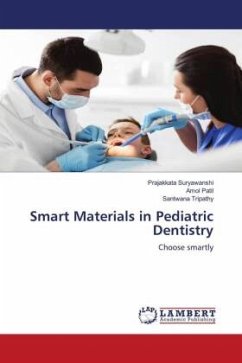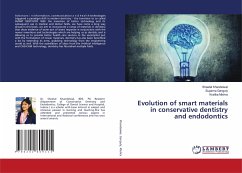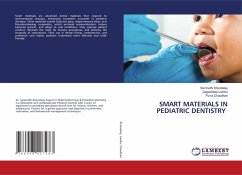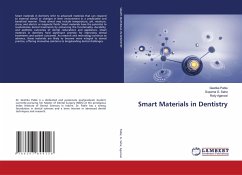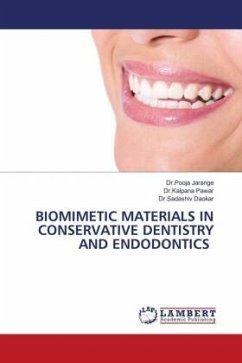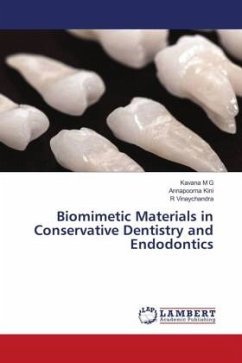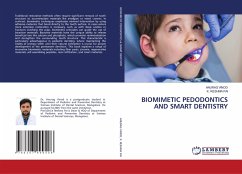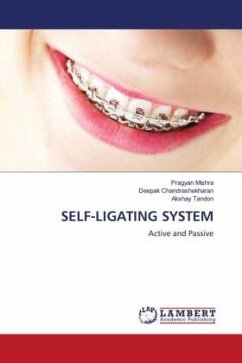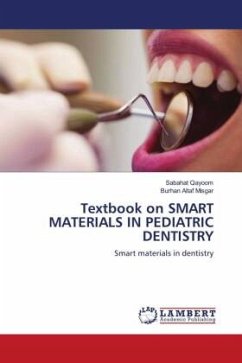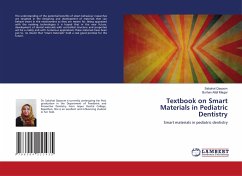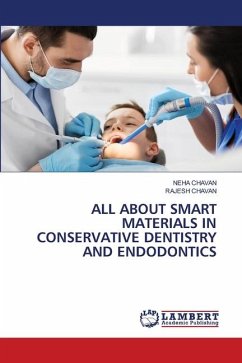
ALL ABOUT SMART MATERIALS IN CONSERVATIVE DENTISTRY AND ENDODONTICS
Versandkostenfrei!
Versandfertig in 6-10 Tagen
45,99 €
inkl. MwSt.

PAYBACK Punkte
23 °P sammeln!
In dentistry, there is no single material that is ideal in nature and fulfils all the requirements of an ideal material. So, the search for an "ideal restorative material" continues, leading to introduction of newer generation of materials. These are termed as "smart materials". Smart materials can be defined as, designed materials that have one or more properties that can be significantly changed in a controlled fashion by external stimuli, such as stress, temperature, moisture, pH, and electric or magnetic fields.These materials are also referred to as Responsive materials. Now Material scie...
In dentistry, there is no single material that is ideal in nature and fulfils all the requirements of an ideal material. So, the search for an "ideal restorative material" continues, leading to introduction of newer generation of materials. These are termed as "smart materials". Smart materials can be defined as, designed materials that have one or more properties that can be significantly changed in a controlled fashion by external stimuli, such as stress, temperature, moisture, pH, and electric or magnetic fields.These materials are also referred to as Responsive materials. Now Material science is not what it used to be before. Traditionally materials used in dentistry were designed to be passive and inert, that is, to exhibit little or no interaction with body tissues and fluids. Materials used in the oral cavity were often judged on their ability to survive without interacting with the oral environment. The present scenario has changed. Many of the advanced materials at the forefront of materials science are functional. They are required to perform things and to undergo purposeful change. They play an active part in the way the structure or device works.





